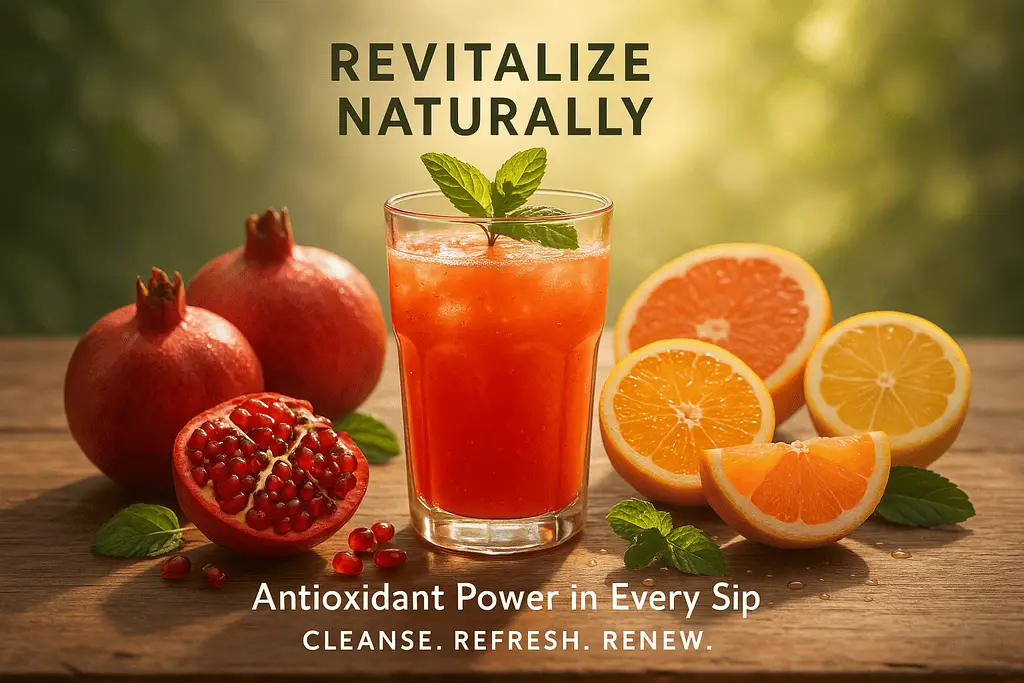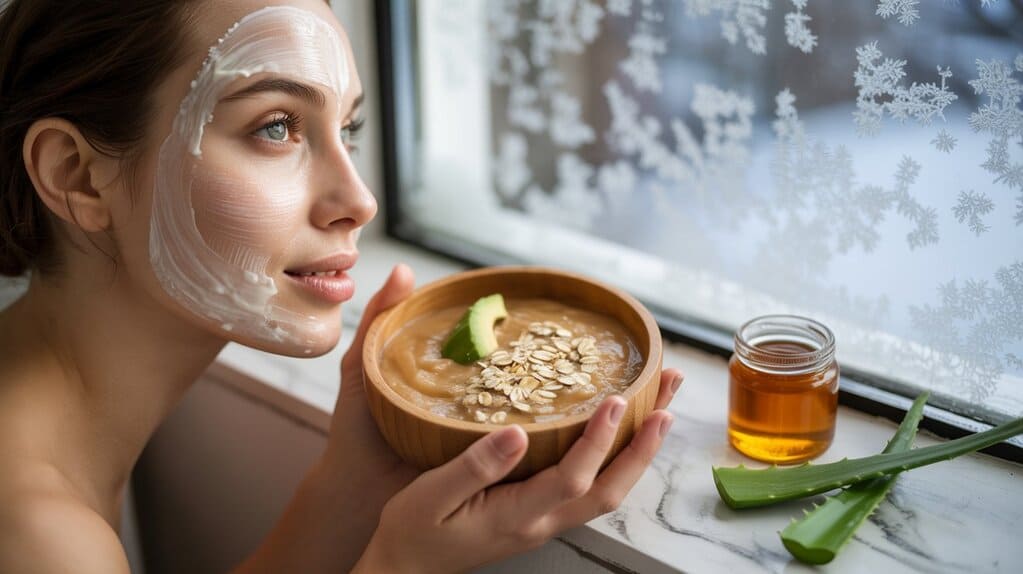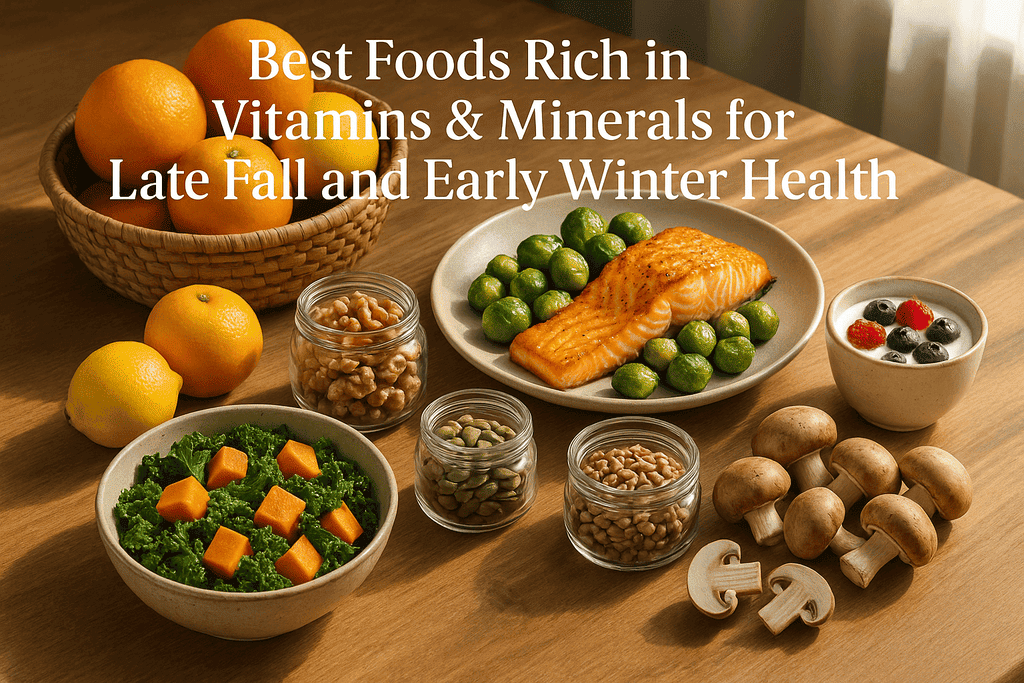
Introduction
Late fall and early winter bring colder weather, shorter days, and a higher risk of seasonal infections. Maintaining optimal nutrition during this transition is essential for preserving energy, strengthening immune defenses, supporting mood, and protecting bone and cardiovascular health. This guide explains the best vitamin- and mineral-rich foods to prioritize in late autumn and early winter, backed by modern scientific and medical studies. It is written in clear, SEO-friendly language and structured for easy translation.
Main points:
- Prioritize seasonal fruits and vegetables (citrus, dark leafy greens, root vegetables) for vitamins C, A (beta‑carotene), folate, and fiber.
- Include fatty fish and fortified foods for vitamin D and omega‑3 fatty acids.
- Choose nuts, seeds, legumes, and whole grains to supply magnesium, zinc, iron, selenium and B‑vitamins.
- Consume dairy or fortified plant alternatives for calcium and vitamin D to protect bone health during low‑sun months.
- Use culinary strategies (light cooking, pairing vitamin C with iron) to maximize absorption.
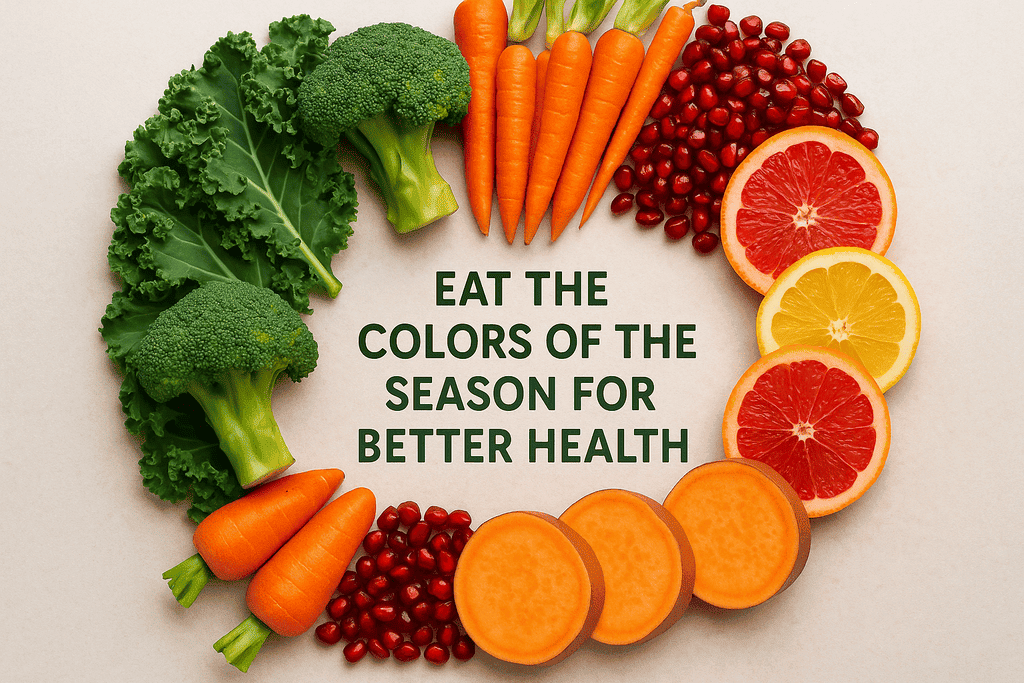
Core Foods and Why They Matter
Below is a practical list of foods you can add to your late fall/early winter menus, with the key vitamins and minerals they provide and short clinical relevance notes.
Table 1 — Top seasonal and widely available foods (nutrient highlights per typical serving)
| Food (typical serving) | Key vitamins/minerals provided | Why it helps (clinical relevance) |
|---|---|---|
| Oranges / Citrus (1 medium orange) | Vitamin C, folate, potassium | Vitamin C supports immune cell function and iron absorption. |
| Kale / Spinach (1 cup, cooked) | Vitamins A (beta‑carotene), K, C, iron, folate | Antioxidants, bone metabolism (vitamin K), and blood health. |
| Sweet potato (1 medium, baked) | Beta‑carotene (Vitamin A provitamin), vitamin C, potassium | Supports mucosal barriers and vision; rich in antioxidants. |
| Salmon / Mackerel (100g) | Vitamin D, B12, omega‑3 EPA/DHA, selenium | Vitamin D and omega‑3s modulate immune and cardiovascular health. |
| Brussels sprouts / Broccoli (1 cup, cooked) | Vitamin C, K, folate, fiber | Supports detoxification pathways and gut health. |
| Lentils / Chickpeas (½ cup cooked) | Iron, zinc, folate, B‑vitamins, magnesium | Plant protein and minerals for energy and immune cells. |
| Yogurt / Kefir (1 cup) | Calcium, B12, phosphorus, probiotics | Bone health and gut‑immune axis support. |
| Almonds / Walnuts (30 g) | Vitamin E, magnesium, healthy fats | Antioxidant protection and inflammation control. |
| Mushrooms (esp. UV‑exposed) (100g) | Vitamin D (when UV exposed), selenium, B vitamins | One of few natural dietary vitamin D sources besides fish. |
| Pomegranate / Berries (½ cup) | Vitamin C, polyphenols, manganese | Antioxidants and anti‑inflammatory phytonutrients. |
| Eggs (1 large) | Vitamin D (small), B12, choline, selenium | Versatile source of several micronutrients important for brain and immune health. |
| Oats / Quinoa (½ cup cooked) | Magnesium, iron, zinc, B‑vitamins, fiber | Energy metabolism and mineral supply; good breakfast base. |
Note: Nutrient content varies by variety, soil, and cooking method. For precise nutrient data use the USDA FoodData Central or national nutrient databases.
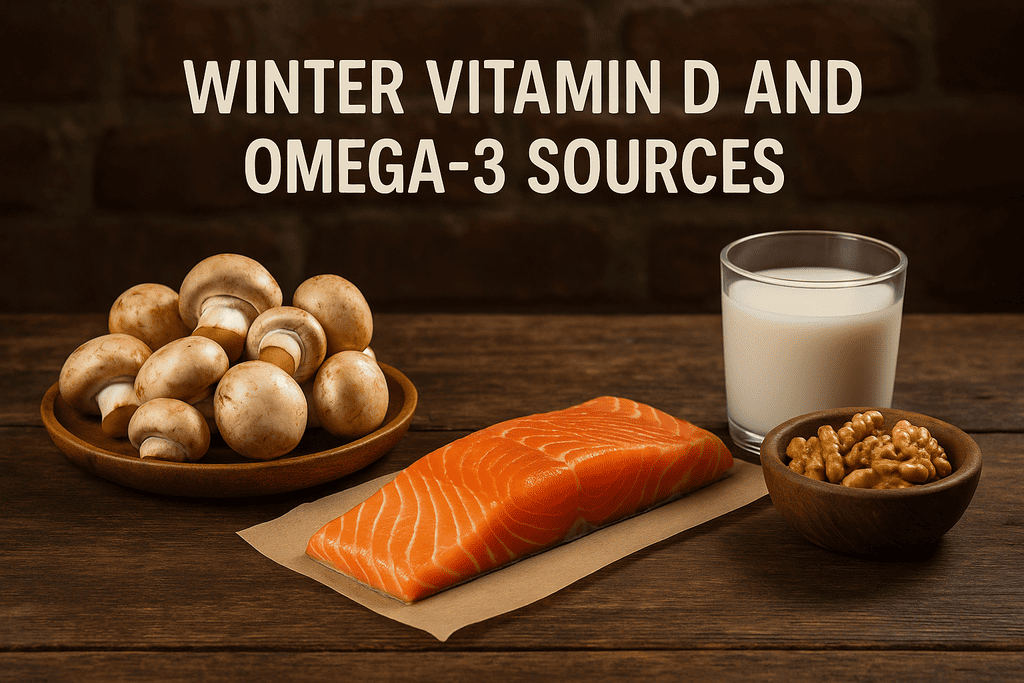
Practical Meal Ideas & Absorption Tips
- Breakfast: Oat porridge topped with chopped almonds, berries, and a spoonful of yogurt — supplies magnesium, vitamin E, vitamin C, probiotics and B‑vitamins.
- Lunch: Warm lentil and kale salad with roasted sweet potato and pumpkin seeds — iron, zinc, folate, beta‑carotene and healthy fats (helps absorption of fat‑soluble vitamins).
- Dinner: Baked salmon with steamed Brussels sprouts and quinoa — vitamin D, omega‑3s, vitamin C, and B‑vitamins.
- Snack: Citrus fruit with a handful of walnuts or a boiled egg and whole‑grain toast.
Absorption hacks:
- Pair vitamin C‑rich foods (citrus, bell peppers) with plant iron sources to enhance non‑heme iron absorption.
- Include a small fat source (olive oil, nuts) in meals with vitamin A, D, E, K to improve uptake (these are fat‑soluble vitamins).
- Avoid drinking strong tea or coffee immediately with iron‑rich meals (tannins can inhibit iron absorption).
Seasonal Focus: Late Fall to Early Winter Shopping List
- Citrus: oranges, mandarins, lemons
- Root vegetables: sweet potatoes, carrots, beets
- Dark leafy greens: kale, Swiss chard, spinach
- Cruciferous vegetables: broccoli, Brussels sprouts, cabbage
- Fatty fish: salmon, sardines, mackerel (or canned options)
- Legumes: lentils, chickpeas, beans
- Nuts & seeds: almonds, walnuts, pumpkin seeds, chia
- Fermented dairy or plant alternatives: yogurt, kefir, fortified plant milk
- Mushrooms (choose UV‑exposed for vitamin D when available)
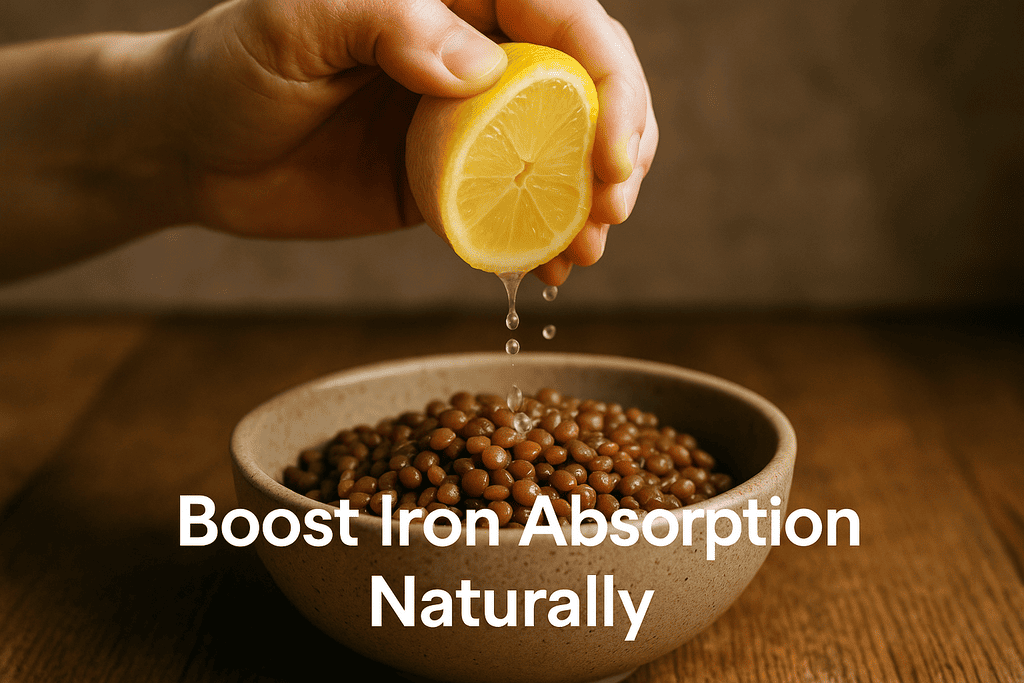
Illustrations (Descriptions for realistic images to accompany the article)
- Hero illustration (wide): A warm, overhead photo of a late‑fall kitchen table: sliced oranges, a glazed salmon fillet, a bowl of kale salad with roasted sweet potato cubes, a small jar of pumpkin seeds, and a cup of yogurt with berries. Caption: “Seasonal foods rich in vitamins and minerals to protect health in late fall and early winter.”
- Close‑up 1: A hand squeezing lemon over a bowl of cooked lentils — demonstrates pairing vitamin C with iron‑rich plant foods.
- Close‑up 2: A selection of UV‑exposed mushrooms next to a fillet of salmon and a small bowl of almonds — to show natural dietary vitamin D and selenium sources.
- Infographic placeholder: A clean infographic that maps which micronutrients each of the top 12 foods supply (vitamin C, D, A, B‑complex, zinc, selenium, magnesium, iron, calcium) with icons for quick scanning.
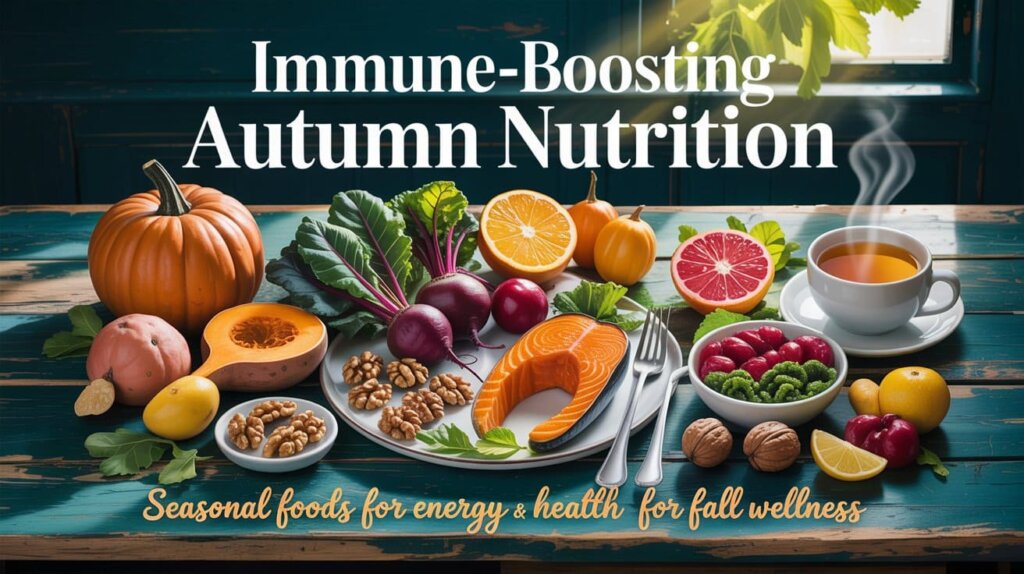
Modern Scientific Evidence (summary)
Multiple contemporary reviews and clinical studies underscore that a diverse diet rich in fruits, vegetables, whole grains, lean proteins, nuts and seeds supplies the micronutrients necessary for immune function, metabolic health and resilience during seasonal stress. Key micronutrients of interest for late fall and early winter include vitamin C, vitamin D, vitamin A (and provitamin A carotenoids), zinc, selenium, magnesium, calcium, and B‑vitamins. Clinical evidence highlights:
- Vitamin C and zinc have measurable roles in supporting immune defenses and reducing susceptibility to respiratory infections when deficiency exists or supplements are used short‑term in some populations.
- Vitamin D is often low during months of limited sun exposure; dietary sources (fatty fish, fortified foods, certain mushrooms) and responsible supplementation are frequently recommended to reach adequate serum levels, especially in older adults.
- Selenium and magnesium are important trace minerals that support antioxidant defenses and cellular metabolism.
(For readers requiring primary studies or clinical trial details, consult the reference list below.)
Safety and Practical Notes
- Supplements vs. whole foods: Whole foods provide a complex matrix of nutrients and phytochemicals that supplements usually cannot replicate. Use supplements only when dietary intake is insufficient or when medically indicated, and under professional guidance.
- Allergies & intolerances: Substitute appropriately (e.g., fortified plant milks for dairy).
- Fortified products: During low‑sun months, fortified milk, plant milks, and cereals can be practical vitamin D sources.
- Food safety: Store root vegetables and leafy greens properly; cook animal products to recommended temperatures.
Conclusion
Late fall and early winter are seasons where smart food choices can make a measurable difference in energy, mood and resistance to seasonal illnesses. By emphasizing seasonal fruits and vegetables, fatty fish or fortified alternatives, whole grains, legumes, nuts and fermented dairy, you supply the vitamins and minerals needed for immune defense, bone health, energy metabolism and cognitive function.
Action steps:
- Build each meal from three components: a colorful vegetable or fruit, a protein source (plant or animal), and a whole‑grain or starchy vegetable.
- Include at least one vitamin C source with plant iron sources.
- Add fatty fish twice weekly or use fortified alternatives.
- Consider a short assessment of vitamin D status with your healthcare provider if you are in an at‑risk group (elderly, limited sun exposure, darker skin).
References and Suggested Reading
- Harvard T.H. Chan School of Public Health — Vitamins and Minerals / The Nutrition Source.
- NIH Office of Dietary Supplements — Dietary Supplements for Immune Function (Health Professional Fact Sheet).
- PubMed / NCBI — Shakoor H. et al., Immune-boosting role of vitamins D, C, E, zinc, selenium (2021 review).
- PubMed / NCBI — Shao T. et al., Physical Activity and Nutritional Influence on Immune. (2021).
- USDA FoodData Central — Database for nutrient composition of foods.
- Food Production, Processing and Nutrition (FPPN) — Immune boosting functional components of natural foods (2023).
- NIH ODS — Vitamin and Mineral Supplement Fact Sheets.
- Additional reviews and national health guidance (WHO healthy diet fact sheets, national nutrition services).

